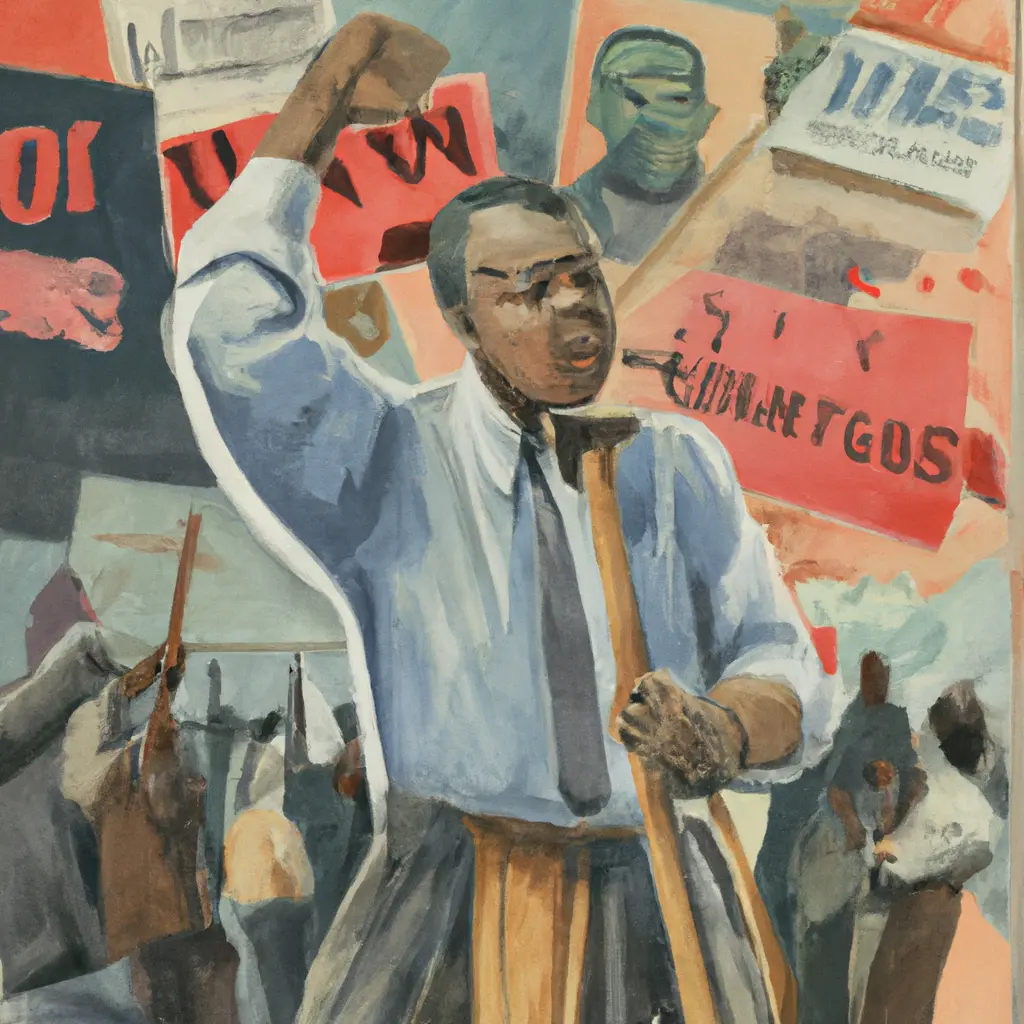About Labor and Race in America during the Great Depression

Before the1930s, the United States faced the Great Depression, Prohibition, women's and workers' rights movements, the emergence of jazz music and Art Deco style in art, the New Deal, and a host of political and social upheavals.
The exhibition "Art for Millions: American Culture and Politics in the 1930s" at the Metropolitan Museum of Art features over 100 objects - from paintings and sculptures to fashion, ephemera, photographs, printed materials, and other forms of decorative art. It tells the story of the decade through the lens of artists who lived and created during that time. However, the most striking aspect of the exhibition is the clear effort by curator Alison Rudnick to highlight the perspectives of women and people of color, expressing their undervalued experiences in the context of industrialization and the expansion of our relationships with machines.
Lithograph by Riva Helfond "Curtain Manufacturing Plant"
One of the notable works on this topic is the lithograph by Riva Helfond titled "Curtain Factory" (circa 1936-1939) - one of the few works from this period that focuses on women's paid labor. Drawing from her own experience working in a textile factory, Helfond conveys the tension imposed on women's bodies through bold shadows, solid lines, and rigid geometry, paralleling the shelves and rolls of fabric with the bent backs of the workers.
The "Curtain Factory" is combined with other images of women from this period. In the lithograph "Burlesque" (1936), Elizabeth Olds depicts dancers standing in a rigid vertical line, like products on a conveyor belt. The artist's thick lines and textures add atmosphere to the militaristic and orderly formation of dancers performing before a male audience looking up from below the stage. Olds herself worked in the Public Works of Art Project (PWAP) in Omaha, Nebraska, from 1933 to 1934, where she created lithographs featuring shelters, clinics, and factory workers. From 1935 until the office's closure in 1940, she worked in the graphic department of the Federal Art Project of the Works Progress Administration (WPA/FAP) in New York, where she was a respected engraver and advocate for artistic equality and women's rights. "Burlesque" is one of many works she created during this period, the themes of which are unusual for the decade.
Visual representations of labor, where people of color take center stage, were also rare in the 1930s. "Art for the Millions" draws attention to them, offering an extraordinarily inclusive narrative about the history of the United States during this decade.

A young girl looking at the viewer
A young girl, looking at the viewer with her arms crossed and her head tilted, in Dorothea Lange's photograph "Mexican Migrant Family with Wheel Problems, California" (February 1936), expresses both hope and despair that characterized the decade, standing in front of her refugee family by the car. Similarly, Dox Thrash's work "Cotton in Georgia" (c. 1944-1945) draws attention to the technique of carborundum engraving, which used industrial material for the roughness of metal printing plates. The rich black tones creating a cloudy effect in this work reflect how smoke and coal from labor industries were produced to improve the lives of Americans, while simultaneously casting a shadow over them.
The exhibition also highlights material culture—especially print culture through posters, magazines, and ephemera—as one of the means by which working-class and colored communities could promote change. Like in his other works of social realism, Charles White's graphite on cardboard "Sojourner Truth and Booker T. Washington" describes the importance of Black history in American culture and politics, focusing on human dignity and the struggles of his community. White combines his passion for art and justice through a medium that allows him to reach an international audience of Black workers.
One of the great strengths of "Art for the Millions" is its focus on human stories, as well as the recognition that many narratives from this period were neither sentimental nor romantic; it was a time when reality did not match the promises of the decade regarding great progress. Going beyond the usual narratives of this decade, the exhibition encompasses the multiplicity of American identity in the 1930s.
The exhibition "Art for Millions: American Culture and Politics in the 1930s" is ongoing at the Metropolitan Museum of Art (1000 Fifth Avenue, Upper East Side, Manhattan) until December 10. The curator of the exhibition is Alison Rudnick, senior curator of the Department of Drawings and Prints at the Metropolitan Museum of Art.
Comment
Popular Posts
Popular Offers


Subscribe to the newsletter from Hatamatata.com!
Subscribe to the newsletter from Hatamatata.com!
I agree to the processing of personal data and confidentiality rules of Hatamatata










